Rocket Science for Traders: Digital Signal Processing Applications
$25.14
| Author(s) | |
|---|---|
| Format |
|
| Pages |
264 |
| Publication Year |
2001 |
Rocket Science for Traders promises to revolutionize the art of trading by introducing modern digital signal processing to the playing field. The application of digital signal processing offers the advantage of viewing old problems from a new perspective. The new perspective gained by digital signal processing has led to the birth and development of some profoundly effective new trading tools. The advances in new trading tools, along with the continuing advancements in hardware capabilities, virtually ensure the continued application of digital signal processing in the future. The trader who masters the fundamental concepts of digital signal processing, therefore, will find great advantage when approaching the volatile market of the twenty-first century.
The Holy Grail of trading is knowing what the markets will do next. Technical analysis is the art of predicting the market based on tested systems. Some systems work well when markets are “trending,” and some work well when they are “cycling,” going neither up nor down, but sideways. In Rocket Science for Traders, noted technical analyst John Ehlers applies his engineering expertise to develop techniques that predict the future more accurately in these times that are otherwise so difficult to trade. Since cycles and trends exist in every time horizon, these methods are useful even in the strongest bull–or bear–market.
John F. Ehlers speaks internationally on the subject of cycles in the market and has expanded the scope of his contributions to technical analysis through the application of scientific digital signal processing techniques.
Contents:
- Introduction to the Science of Digital Signal Analysis
- Market Modes
- Moving Averages
- Momentum Functions
- Complex Variables
- Hilbert Transforms
- Measuring Cycle Periods
- Signal-to-Noise Ratio
- The Sinewave Indicator
- The Instantaneous Trendline
- Identifying Market Modes
- Designing a Profitable Trading System
- Transform Arithmetic
- Finite Impulse Response Filters
- Infinite Impulse Response Filters
- Removing Lag
- MAMA-The Mother of Adaptive Moving Averages
- Ehlers Filters
- Measuring Market Spectra
- Optimum Predictive Filters
- What You See Is What You Get
- Making Standard Indicators Adaptive
Rocket Science for Traders: Digital Signal Processing Applications By John F. Ehlers pdf
21 reviews for Rocket Science for Traders: Digital Signal Processing Applications
Clear filtersOnly logged in customers who have purchased this product may leave a review.

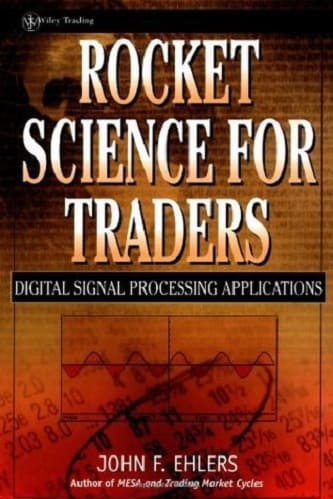
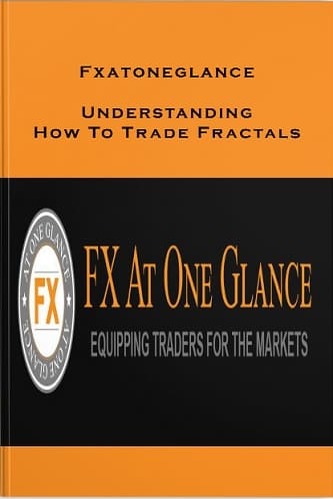
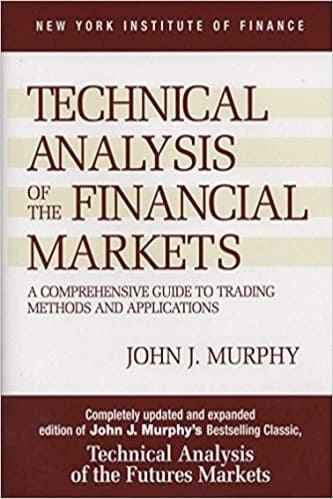
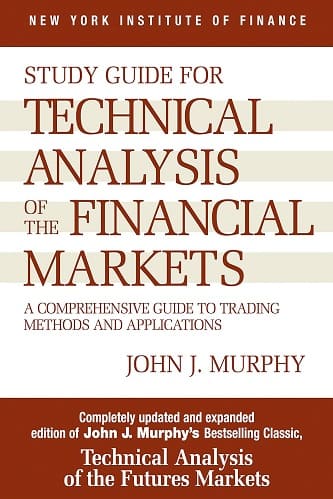
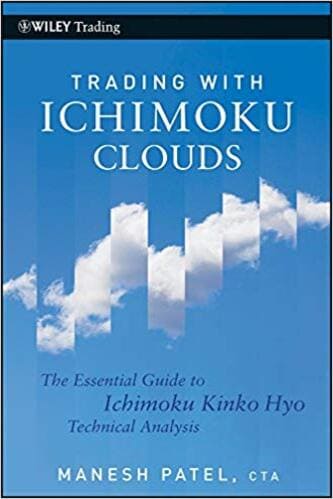
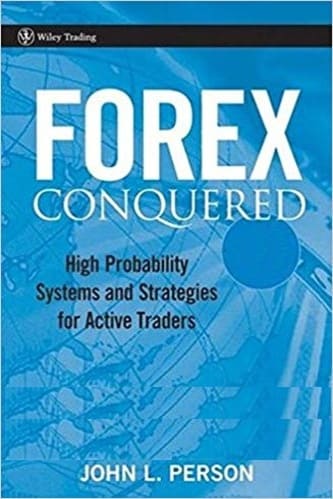
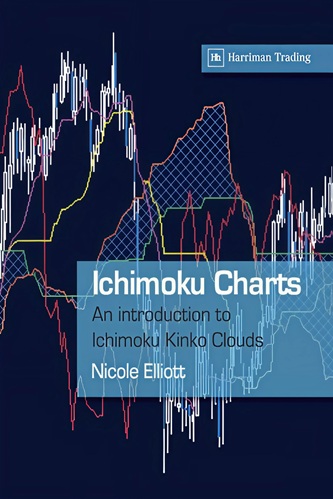

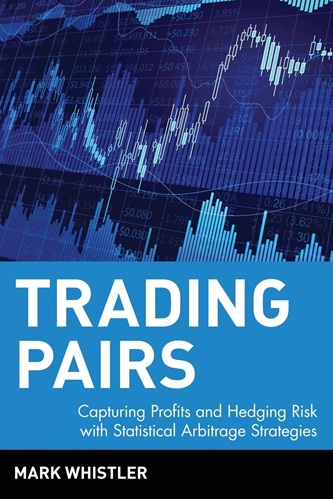
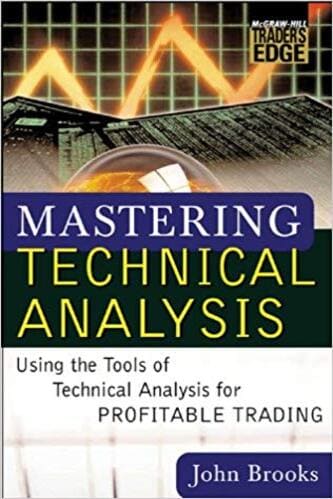
Erin Martin (verified owner) –
I think this is a very interesting book for people who have some knowledge of digital signal processing, although it is not at all public. In particular, I’m doing something similar to my specialty nuclear magnetic resonance (NMR) data processing, so I think this is a fun book for people in this field.
Luna Campbell (verified owner) –
We are making a tearful effort by bringing out rocket engineering, which is essential for tool polishing for a few percent of performance. However, since it is impossible to advance stock prices, and it is impossible to predict stock prices, there are still doubts as to whether they will demonstrate such power when tools are sharpened.
I can’t keep an eye on whether it will be a further rapid rise in stock prices such as rockets of US stocks in front of my eyes
or an unprecedented light like a launch fireworks.
Korbin Escobar (verified owner) –
This is an exciting book, full of many good ideas. However, there are quite a few technical errors in the mathematics.
There are also some perplexing explanations in the early stages of the book. These compromise the good ideas that the author expresses. I also think it is a bit of a stretch for the author to say that the “easy language code” is easily portable to bacic, C++ or Excel since a few of the commands in his code would not work in these contexts. If one uses his comments on the code, these can be worked around.
Otis Frye (verified owner) –
I am a student currently writing a dissertation on the development of mechanical trading systems, and I found this
book was helpful to develop a systematic approach based on a new and more sophistacted set of indicators.
I found the MAMA moving average as explained in the book particularly useful. The book may be a bit hard to read but it was definitely worth the effort and it supplies some systems like the Zero Lag and the Sinewave System, which are worth much more than the price of the book.
Christopher Corona (verified owner) –
I’m far from a mathematical genius, so I purchased the book with some concerns about it being too technical. However, I found I could easily understand the end results without having to understand the detailed math. In my view, you only have to find one indicator that is more responsive for you to deem this a prudent purchase. While there are many valuable indicators described in the book (with the requisite Trade Station Easy Language Code included), I found the automatically adaptive stochastic indicator to be the most helpful to me.
Damon Moon (verified owner) –
John Ehlers has taken important steps in expanding fully mechanical techanical systems. This book is written at several levels, with my appreciation growing each time I go back to get more details in my system development. His book is a great reference to developing indicators and systems that complement your own trading style. As I firmly believe that a trader has to develop a system that he understands and has confidence in, the adaptive philosophy embodied by his systems are necessary in todays constantly changing environment. This book is essential for those involved in system development of their own.
Calvin Swanson (verified owner) –
I think this book is great even for non-math people. In fact, I am not good at math at all. I read it a couple of times and figured out what the author wanted to say.
This book is especially good for people who are interested in creating their own trading systems.
Avianna Finley (verified owner) –
John Ehlers is a real-life rocket scientist fascinated by trading the markets. He applies the principles of signal processing in order to find signals (trends and turns) behind the noise of random moves. His book is the exact opposite of ‘easy money’ slap jobs – it requires attention and some familiarity with math, but the reward is that it takes you from general principles to the exact computer code for finding trading signals.
Clayton Love (verified owner) –
John Ehlers has been applying concepts and learnings from the sciences (electronic cycle and wave theory and physics) to developing trading indicators since the early 80’s. Every broker’s terminal has Stochastics, developed by George Lane and nearly every “tool box” charting program includes Gerald Appel’s MACD, John Bollinger’s Bands, Welles Wilder’s ADX, RSI, parabolic and so on. These tools can all be useful …. But none come close to matching the originality of John Ehlers’ work with cycles and the development of MESA (Maximum Entropy Spectral Analysis) as a market trading tool.
The concepts used by Ehlers are very sophisticated and have never before been applied to trading, which is why they work. While his concepts take some effort to develop a full understanding, in “Rocket Science” Ehlers describes the indicators and systems very concisely, does not belabor useless scientific details, but rather acquaints the reader with the overall concept and then quickly moves to a discussion of how the indicator can be used in trading.
In Rocket Science Ehlers not only provides several cycle-based indicators and a couple trading systems, but he also provides all the TradeStation code (also available for a small charge on his website: […]
Ehlers has also updated his earlier book: “MESA and Trading Market Cycles” which I look forward to receiving soon.
Marleigh Chase (verified owner) –
i fear the writer of this book may well be a charlatain: one finds charlatains in the speculative venues with great regularity these days, and among their many tricks is the mathematics which they use to cover their slight of hand. mr. ehler’s mathematics has the selfsame odor: his is a hodgepodge of methods taken from various disciplines and thrown at the reader with little or no coherence, system, or, i fear, understanding. mistakes are made in application–as, for instance, the assertion that bandpass is accomplished by smoothing (the MA), when bandpass filters only tangentially modify noise. mr. ehlers goes to great lengths to explain certain elements of grade school mathmatics, but cavalierly tosses his occasional differential equation forth without adequate, and certainly without clear, exposition of its use and implications for the techniques mr. ehlers is demonstrating. one might suspect that mr. ehlers may himself only understand the former, and be utterly confused about the latter, if he were in an uncharitable mood. is this snake oil? is the reader made uncertain witness at the intellectual equivalent of a revival meeting? shrug with me, for i don’t know. as to the application of these techniques, one can only employ them if a. one’s grasp of the field of signal processing and its mathematics is adequate to disentangle some useful material and ideas from the presentation (if, that is, one can overcome the impulse to laugh)–although in which case, you probably would not need this book; or b. one is willing to purchase mr.ehler’s software to do it for him (surprise, surprise). my advice is, if you wish to have a book with which to convince your friends that indeed, speculation is an honorable venue, perhaps this is it: opening it certainly stuns the unsuspecting, what with our almost reverential ignorance of formulae. if you wish to have a book that WOULD impress your friends, and they were mathematically literate, get mandlebrot’s or some such. alas, the truth is, if you wish to apply processes and techniques from the sciences and mathematics to finance, you have to study the science and the math, and do it yourself.
in sum, it may be that mr. ehlers knows whereof he speaks, but the reader will almost certainly not.
Katalina Portillo (verified owner) –
Fine book for what it is, but this is just not the right technique for systematic trading because the models proposed are misspecified for the signal over the time series (as another reviewer pointed out, price time series do not conform to the conditions of electrical and telecommunications signals).
Still, many of the skills needed to isolate real signals and deploy real strategies are built through exercising with these methods, so all is not lost if you wade through this, deploy something, and come back with knowledge but little cash.
Who is the book not for: phynance-lite Excel-based users.
Who is the book for? Do you use Matlab or Mathematica or Maple? Do you know what an Active X link is for data feeds? Do you look at the tick data of the currency and swaps market and see gold? Are you laughing at me because these questions are inefficient baby-level stuff? (Hint: you’ve outgrown this book).
Mateo Shepherd (verified owner) –
im up to chapter 10 (instantaneous trendline). i will say i read trading for a living first. elder basically says that the mesa software shows mose cycles are false. so far in the book ive read that ehlers code will show me wether the financial instrument in in a trend of cycle mode. by cycle i assume he means range/sideways movement. the he goes on to say/describe leading oscillators (derived from cycles / complex variables). the math is complex no pun intended. as a chemistry major in college, ive been exposed to all of it through engneering physics, differential eqs, calculus etc. ehlers makes no attempt to derive the equations used. the are presented at face value. basically he presents the concept and then shows the easy language code.
I will say that because my education began with elder trading for a living, my perspective is that ehlers stuff should augment the classical
charting and technical analysis. of course mind/method /money is first. the way i read trading for a living is that most cycles are false. but, some are real. I like what ehlers has to say in rocket science, but i dont believe in black boxes or automatic systems.
i have taken elders advice and read “security analyisi” graham dodd, “technical analysis of the financial markets”- murphy, come into my trading room- elder, and am working on “technical analysis of stock trends” – edwards.
my take is that i should begin with fundamental analysis- for the major and possibly intermediate “dow” moves, but confirm with and trade technical analysis .
the benefit as i see it (so far) , is to augment the use of the technical analysis methods. ie what is the best time frame for a ema/slow stochastic and does the ehler code tell me that im for example trading a cycle within a trend, or a trend within a longer term cycle. but no, as a stand alone method, im not going to do that. im not sure that if would even complete with the 3300 some of pages of
trading for a living -elder
come into my trading room
security analysis – graham dodd
technical analysis of the financial market-murphy
Raya Christian (verified owner) –
Whoever reads the reviews for this book will note the polarity: people either think it’s wonderful or it’s horrid. I’ll try to give a more balanced review here.
* This book is for the mathematically/analytically inclined. If you don’t consider yourself in this category, I would not suggest this book. At the VERY least you should have a solid background in trigonometry.
* This book is exactly what is says: Digital-Signal Processing (DSP) applied to stock trading. I myself am an Electrical Engineer who’s day-job consists of about 90% DSP-work / 10% other tasks. For this reason, I believe I can fairly say that the DSP concepts presented are done so in a fairly clear and fairly accurate manner (this varies from time-to-time).
* Most of the concepts presented in Ehlers’ book would be what I consider “traditional” DSP. There is a problem here (that is almost completely overlooked in the book): “Traditional” DSP is based on a series of assumptions that must be at least approximately fulfilled. Recent academic research has tended to show that stock-market “signals” tend NOT to fulfill these assumptions very well. In some ways, this puts a significant dent (in my view) in the theory used as the basis for the indicators derived.
* The attention to detail at times is very obtrusive to a reader with a keen eye and understanding of what is being described. For example: there is (what I consider to be) a glaring error in the MAMA filter that no one has ever pointed out and that is not corrected on his website. How has this escaped notice for so long? [Side note: be careful about his claim that MAMA’s avoid whipsaws – they DON’T at all in ranging markets!]
* Two mechanical systems are described in detail in the book: the SineTrend Automatic System and the ZeroLag Intraday System. I have EXTENSIVELY tested both systems, exactly as described in the book, on a very-wide range of stocks, commodities, and currencies. These simulations were carried out using a test suite I had developed for my own use to simulate trading conditions as realistically as possible. This includes conservative, but realistic allowances for slippage, commissions ($15 round-turn), and signal reaction.
Ehlers results for the SineTrend Automatic System grab your attention in the book (greater than $100,000). However, no initial investment is listed in the book and one should be careful to note that these results are over a 15 year period. Assuming a $10000 initial investment (though this isn’t specified in the book), this is a 17% annual return. Not bad, not great.
The REAL problem here is that a more realistic simulation shows that one is hard-pressed to show ANY profit on ANY type of stock/commodity/currency. I’ve tried the system (unaltered) on dozens of instruments, with a couple rather moderate successes and the rest losing money terribly, even with reasonable stop losses and money management.
* Almost (if not all) of Ehler’s graphs in his book are from the same time series: specifically the US96H (March 1996 Treasury Bond contracts). I HAVE been able to reproduce all of the graphs in his book using the indicators: so there is no falsification in them, as implied in other reviews. However, the time period under consideration shows a series with nearly ideal characteristics for Ehlers systems, while almost all other series I’ve tested his indicators and systems on do not exhibit the same performance.
* MOST ALL of the information presented in his book is available for FREE download on his website as Word DOCs. There is also a lot of other papers he has written available on the site.
* Ehlers is doing what I think needs to be done in the trading industry: trying new techniques and methods. He has a good grasp of the electrical-engineering concepts and how to apply them to trading, but the results presented in his book are NOT indicative of TYPICAL results of the performance of his systems. The ideas and the theory behind them are, generally, good, though he is a bit prone in parts to handwaving and glossing-over of some obvious pitfalls (obvious, at least, to another electrical engineer).
* For the mathematically-inclined who enjoy working on their own ideas and own systems, this book could give you a lot of insight into technical trading and provide some good jumping-off points to developing systems that are TRULY profitable. I have yet to see (or develop) one that I would be willing to risk real money on and I would caution readers from thinking that either of the two systems presented will provide the type of profits described in the book.
To all others (probably the vast majority of those interested in this book!) I would say be very careful before spending your money on this. There is no reliably turn-key system provided in this book, even though there are two that are purported to be such.
Calum Wolfe (verified owner) –
In this day and age of readily available information, super computers and advances in computational tools, the markets are becoming extremely efficient. If a trader or investor wants to keep pace or even “beat the market”, he must become more sophisticated. Rocket Science for Traders offers traders the tools necessary to survive in the equity and commodity markets.
The math and accompanying monologue may be difficult but the premise is simple. If the markets are somewhat inefficient then past prices contain information that is exploitable by the trader. But the past prices will also contain unwanted “noise”. John Ehlers book provides the tools necessary to eliminate the noise offering traders a clearer picture of where the markets are heading. If someone understands this they can skip the math and derivations and simply copy the code into TradeStation and immediately use the indicators and systems. Or, better yet, use the indicators and cycle length measurements as inputs into other systems and indicators making them truly adaptive and powerful.
I agree with the reviewer who said to “keep it simple.” However, we should remember Einstein’s recommendation that a model should be “as simple as possible, but not simpler.” This book offers traders the ability to use state of the art signal extraction in their simple models. Anyone that develops his or her own trading strategies based on technical analysis must have and USE this book.
Elise Hutchinson (verified owner) –
Finally a book on trading that is completely different from all the others I have read. If you are getting the unhealthy feeling that 99% of all the indicators and techniques you are using, or came with your charting package, are minor variations on the same tired theme, then you should get this book.
Note: do not be put off by the math in the book. If you just skip what you don’t understand, and I skipped a lot, there is enough informative pure text for you to get most of the benefits of the ideas that are put across in this fine text. In addition there are a couple of complete trading systems and a plethora of new and innovative indicators for which you are given the complete TradeStation Easy Language code….
Eileen Fields (verified owner) –
Very good and highly useful equations applying signal theory to financial time series.
Naya Mendez (verified owner) –
I’ve read lots of books on trading, all of them using the balance between the bulls and the bears, their psicology, who’s stronger and how this affects the market. Some of these books are absolutely genial.
This book gives a completely new view about the market. At least new to me. Interpreting the market as a signal (just as if it were radio signal, or whatever) and processing the results gives surprising results. In some cases these results are not very different from the traditional indicators, but in others results are incredible. In any case the arsenal of new tools opens possibilities to increase the effectiveness of trading and you can choose which tools fit your trading. You can find at least one, for sure. Well, at least I found some.
No panacea here. No miracles. But interesting and effective new point of view and tools.
Helen Brandt (verified owner) –
The book introduces a lot of very advanced mathematical techniques (partial differential equations, laplace transforms, fourier transforms) . He does this but does not give adequate support for these techniques. He also only gives limited examples. He really doesn’t tie the indicators to real everyday trading. The book isn’t really worth it. It is very difficult to use what’s in this book, for a broad based system.
Arthur McClain (verified owner) –
Great Book! Reading “Rocket Science for Traders” was like taking a fresh breath of air. I devoured it over one weekend and have read and studied some chapter portions two or three times since my first reading. Over the years I’ve read most of the best and highly recommended technical analysis books and studied the various indicators that are being used and sometimes touted. However, I have consistently come away feeling that so many people pursuing technical analysis are not very technical at all. For example, a well known and widely used indicator takes the standard deviation of price data and uses it. Price data, however, is not “normal” or Gaussian distributed. Therefore, the standard deviation, as calculated, is mis-applied and what results is not an accurate variance measurement around the price mean or average as it is intended to be.
In his book, John Ehlers has provided us, a set of indicators, systems and concepts that are sound conceptually, mathematically and fundamentally proven. The tools that he presents are accepted, in science and engineering, around the world as some of the best that we have in which to model discrete and sampled data systems like the stock market. His book has helped confirm some of my ideas and I have enhanced the effectiveness of my systems with the use of his little and no lag processes and models.
I have a strong engineering and math background and the book to me was a “God send” because the theory, examples and EasyLanguage code were all given and well presented. However, I believe a beginner and any serious trader or student will likewise significantly benefit from John’s book. That’s because its easy to read, i.e., the concepts and applications are clearly explained in plain english. You don’t have to do any math or understand the math or derivation concepts to use and apply the indicators and systems. Also, as mentioned above, the EasyLanguage code is provided and also easy to read and understand.
Hallie Rivas (verified owner) –
The contents were too deep for me. I observed the book was well written and presented the covered material in great detail. It’s an excellent read for the right market technician.
Wallace Wilson (verified owner) –
5 star no review